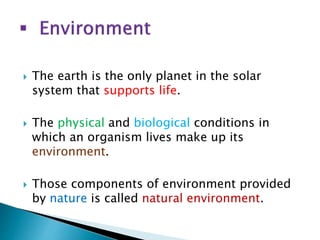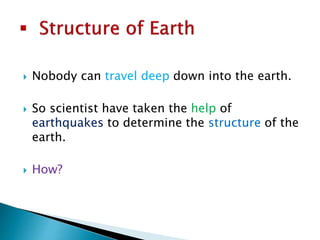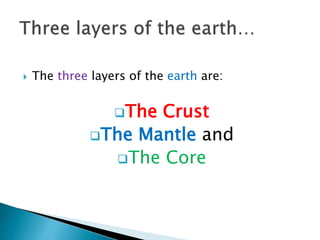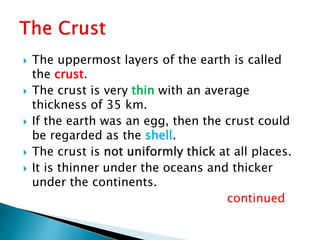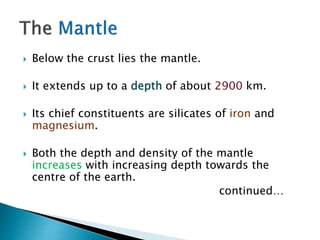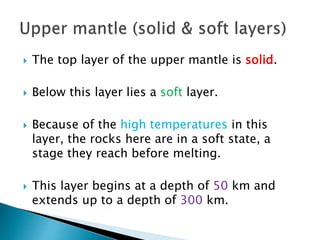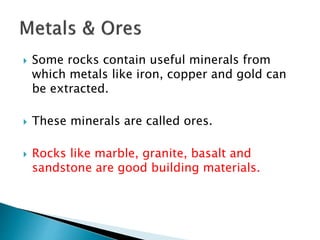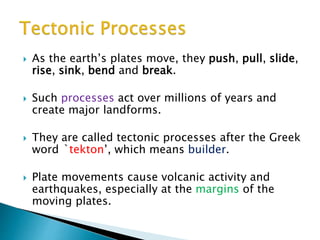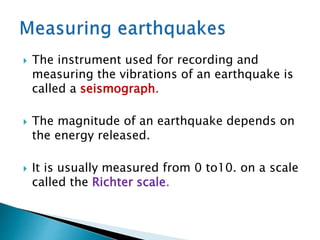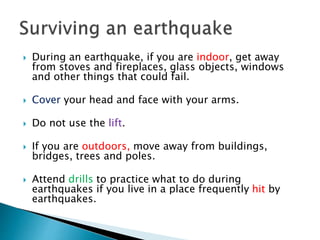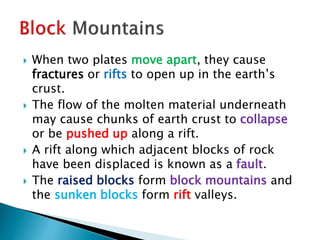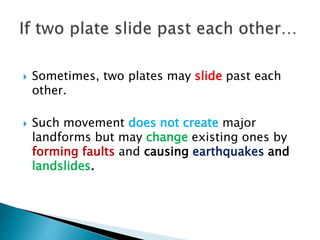The document provides an overview of Earth's geography, including its environment, structure, and landforms. It explains the three layers of the Earth—crust, mantle, and core—along with the formation and types of rocks and the processes that create landforms, such as volcanism and tectonic activity. Additionally, it discusses the causes and impacts of earthquakes, emphasizing the importance of understanding seismic activity and safety measures.



